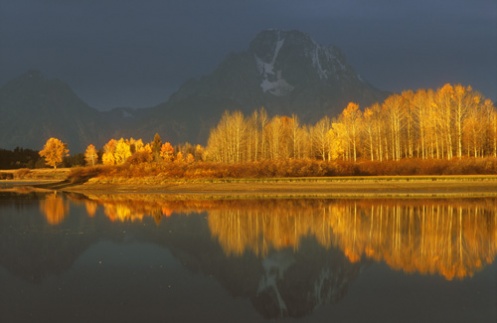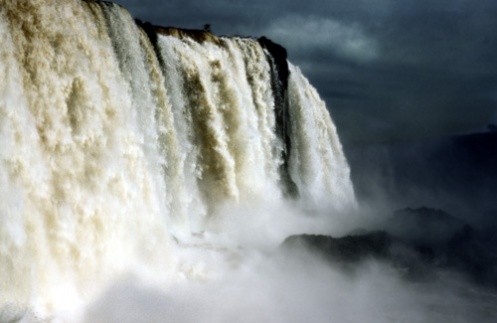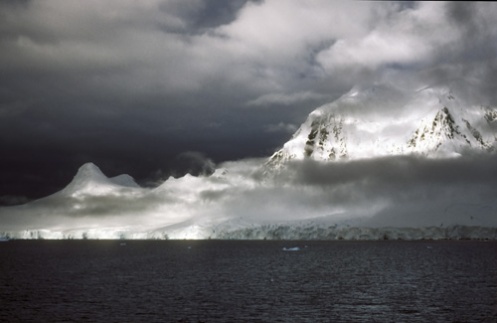 See Image 1 Description Below
See Image 1 Description Below
 See Image 2 Description Below
See Image 2 Description Below
 See Image 3 Description Below
See Image 1 Description Below
See Image 3 Description Below
See Image 1 Description Below


Image 1 - This image was captured at about 0630 in the Grand Tetons National Park in Wyoming, USA. It was my third successive dawn visit to this particular location, and I had already photographed the scene as the sun appeared above the horizon at the beginnings of glorious days. On this occasion, it was raining when I awoke at 0400 and it was very tempting to climb back into bed. Fortunately, I did not do so.
The rain had stopped when I arrived at the location, but the sky was black and threatening. My camera was loaded with Fuji Velvia 50 ISO film, so at an aperture of f/16 the shutter speed was in the region of 2 seconds. I therefore locked the camera on a tripod and attached a remote release, a 105mm lens and a Lee filter holder in case I suddenly needed a neutral-density grad, a polarizer or a warm-up filter. Then I waited half-heartedly for about an hour. The light looked hopeless and there many moments when I not only questioned my own sanity but also considered heading for the nearest coffee shop. Then, without any warning whatsoever, a tiny gap opened in the cloud close to the eastern horizon. An unbelievable laser-like beam of light was projected straight onto the golden aspen trees. The hair on the back of my neck stood up as a two-minute light-show unfolded. I just kept pressing the shutter release and even found moments to make quick changes of settings. Then the cloud closed again, and it was all over as suddenly as it had started. The trees returned to dark grey, the scene flattened and I headed for the coffee shop, but I knew I had a shot in the can.
Image 2 - South America's Iguazu Falls straddle the border between Brazil and Argentina and, at four times the width of Niagara, are the largest waterfalls in the world. This is the Devil's Throat, at 269 feet high one of the largest of the 275 separate cascades collectively known as Iguazu. The power of the mighty Rio Iguazu, which plunges over this precipice 14 miles above its confluence with the Parana¡, is such that the ground trembles and the thunder of falling water can be heard from a distance of 3 miles. The image shows just one small part of the 2½ miles of cascades that constitute the spectacle of Iguazu.
The photograph was taken as a storm approached. The last of the sunshine was still on the water but the background looked quite menacing. The main problem was keeping the camera and lens dry. An oilskin jacket was held overhead and the lens was wiped clear of spray every few seconds. It was impossible to use a tripod because the wooden observation platform on which I was standing was trembling far too much to obtain a sharp image. I therefore used a shutter speed of 1/60 sec to capture an image close to human perception. The foreground water is somewhat blurred but more distant parts of the cascade remain reasonably sharp.
Image 3 - This picture was taken from the deck of a ship as it passed through the Neumeyer Straits off the coast of Grahamland, Antarctica. The magnitude of the scenery is difficult to grasp because the Antarctic continent has no significant vegetation or buildings to give scale. However, the ice-cliffs along the distant water's edge are typically three hundred feet high.
The camera was hand held because the vibration of the moving ship made the use of a tripod impossible. Contrast was high, so I exposed mainly for the snow and let the water go dark. The bottom of the image has been cropped because there was little interest in the foreground.
The most significant element of the scene is, however, not directly visible - the temperature. The picture was taken at about 0400, which was possible because midsummer daylight continues for 24 hours per day at this latitude. The temperature was around -15C at the time - almost a heat-wave in this part of the world. However, camera batteries and cameras can fail in unexpected and spectacular fashion in such cold conditions. Spare batteries must be kept warm inside clothing and swapped with those in the camera every 30 minutes or so. Many cameras mechanisms also fail because lubricant is unsuitable for polar conditions - read the temperature specification before setting off. My Nikon F5 kept going - perhaps that is part of what you pay for!






